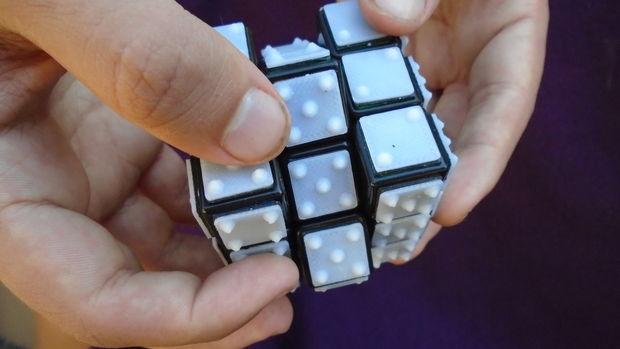Results 1 to 3 of 3
-
04-27-2015, 08:34 AM #1
A 3D Printed Rubik's Cube for the Blind
An Instructables contributor found a way to create a Rubik’s Cube for a good friend who is visually impaired and had never experienced the agony and the ectasy of this 3D puzzle and 1980s craze. The project involves 3D printing plastic panels with Braille numbers from 1 to 6 to replace the colored cube faces on the standard Rubick’s Cube. The puzzle cube can then be solved with only the sensation of touch. Check out more details on this thoughtful project in the full story: http://3dprint.com/59310/rubiks-cube...inted-braille/
Below is a photo of a Rubik's Cube enhanced with Braille tiles:

-
05-05-2015, 10:42 AM #2Student

- Join Date
- May 2015
- Posts
- 1
This is a great idea - but to be accurate, the numbers shown in the photo are not braille numbers. Braille is a standardized system of six dots in three rows and two columns (per braille cell). Like this:
# #
# #
# #
See http://www.duxburysystems.com/braillechart.asp
There are good reasons not to use braille numbers on this Rubick's cube (they're not symmetrical, for one thing, so they could be confusing when rotated). It would be better not to describe this as a braille Rubick's cube, though. It would be better to simply say that there are tactile markers or raised dots to distinguish the different faces.Last edited by rsheffield; 05-05-2015 at 01:04 PM.
-
05-06-2015, 06:33 AM #3
I really liked the way, I'm thinking about buying a MakerBot. My university has one, so I'm trying to get in and play with it before I invest a grand in the project of bringing ideas to the physical world.






 Reply With Quote
Reply With Quote




Extruder not feeding during print,...
Yesterday, 02:02 PM in Tips, Tricks and Tech Help